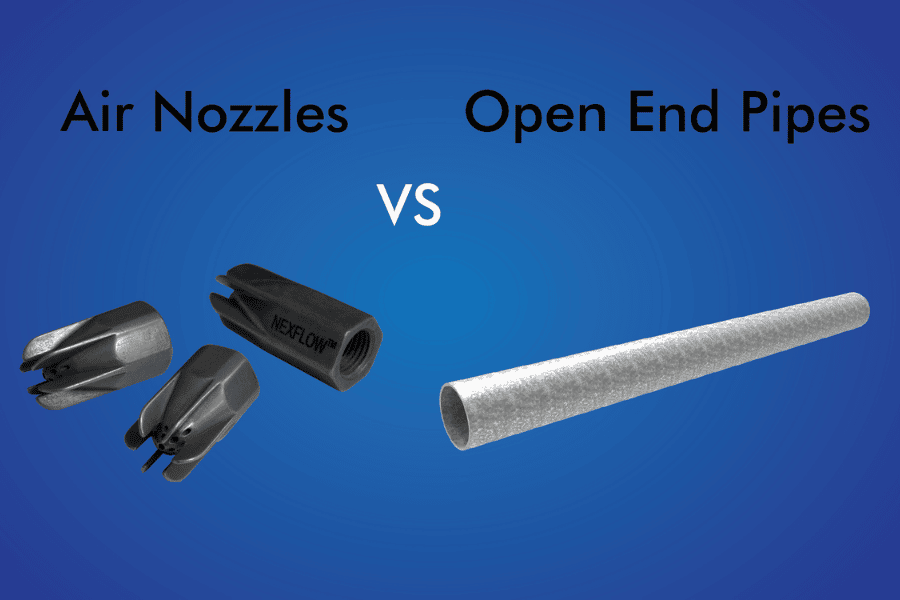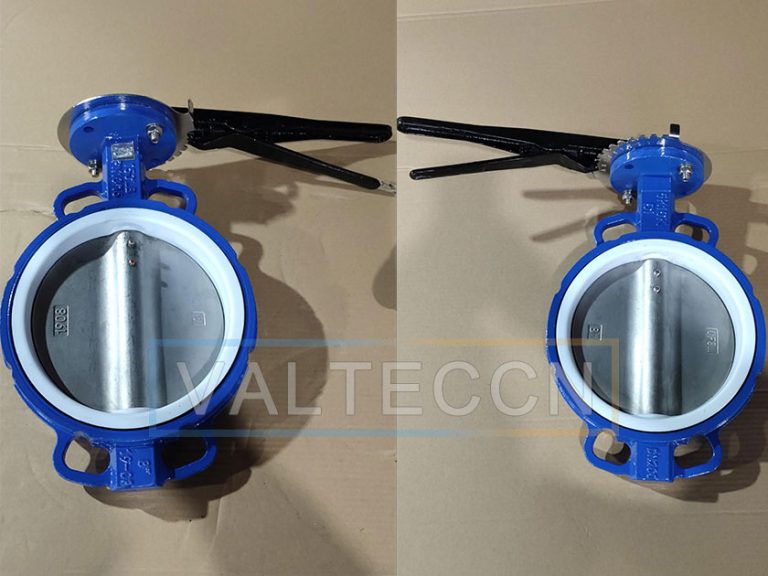Pay attention to engineered air nozzles

Why Does No One Pay Attention to Engineered Air Nozzles – Mostly!:
We are biased on this but it does seem that engineered compressed air nozzles are not top of mind in many compressed air blow off applications.
This is evidenced by the preponderance of open pipe and crimped tubing still in use.
But when you consider that around 70% of compressed air (after accounting for leaks) is still used for blowing or cooling, that’s really a major energy cost that may be ignored.
We believe there are possibly four primary reasons:
- Perception that the Improvement is not worth the cost:
Published claims of 40% or more are quite valid when adding an engineered nozzle to a pipe or tube set at 80 to 100 PSIG.
That statement itself can create suspicion to such a claim.
The actual pressure coming out of the nozzle will be much less from an engineered nozzle. So why not just reduce the line pressure which ALSO reduces air consumption and noise?
When comparing an engineered nozzle putting out 30 PSIG (with 80 PSIG line pressure) to an open tube with a regulator set to 30 PSIG the savings improvement actually reduces to about 10% – but it’s still 10%.
In addition, open tube will dramatically weaken when even a couple inches away due to turbulence while an engineered nozzle can work up to 12 inches away and be much more effective due to laminar flow.
That in itself can affect production supporting the argument for engineered air nozzles based on performance alone even when compared to low pressure output from open pipe or tube.
If you are a machine or system manufacturer, engineered nozzles, especially very small ones can be quite costly adding to machine cost and may find it difficult to sell the value added such products can provide.
On the other hand, it offers a potential profitable value added that can also enhance your company reputation for innovation and superior design and performance.
- Engineered Air Nozzles Plug up and Stop Working:
This comes up more often in very large factories where the compressed air system is old, and frankly, not well designed or maintained.
This can be true with improper filtration but investing in proper filtration, with innovative improvements that have occurred over the years, can offset this concern over plugging.
Energy savings and reduced noise can typically have a one year payback on improved filtration as well as longer term benefits by fixing up an old or previously not maintained well compressed air delivery system.
- Engineered nozzles are not strong enough.
There are applications where high pressure is just plain required for the job and engineered air nozzles just do not have that high a pressure.
The problem is when that generalization of weakness is extended across all potential applications.
That generalization can also be aggravated due to overzealous sales personnel that over sell the technology due to lack of adequate knowledge or bad management.
So if a very high pressure is required such as when you need such force to break off a piece of scrap metal from a manufactured part, then engineered nozzles will not work.
- All Engineered Air Nozzles are the same:
Many suppliers of compressed air operated parts from valves to cylinders not have air nozzles and why not? It’s an easy add on.
The problem is that given any set of nozzles, even if they look almost the same externally, can dramatically vary in performance, air consumption, and energy output.
It’s not just the outside, it’s the inside as well. As such, performance data should be available and if not, demanded, to be assured you actually do have a good engineered nozzle.
For this reason, Nex Flow manufacturers what they know and understand and not things like cylinders which we can certainly make, but choose instead to focus on what we do best and do well.
We love to hear about industry bias. If you have any, please email us at technical@nexflow.com






